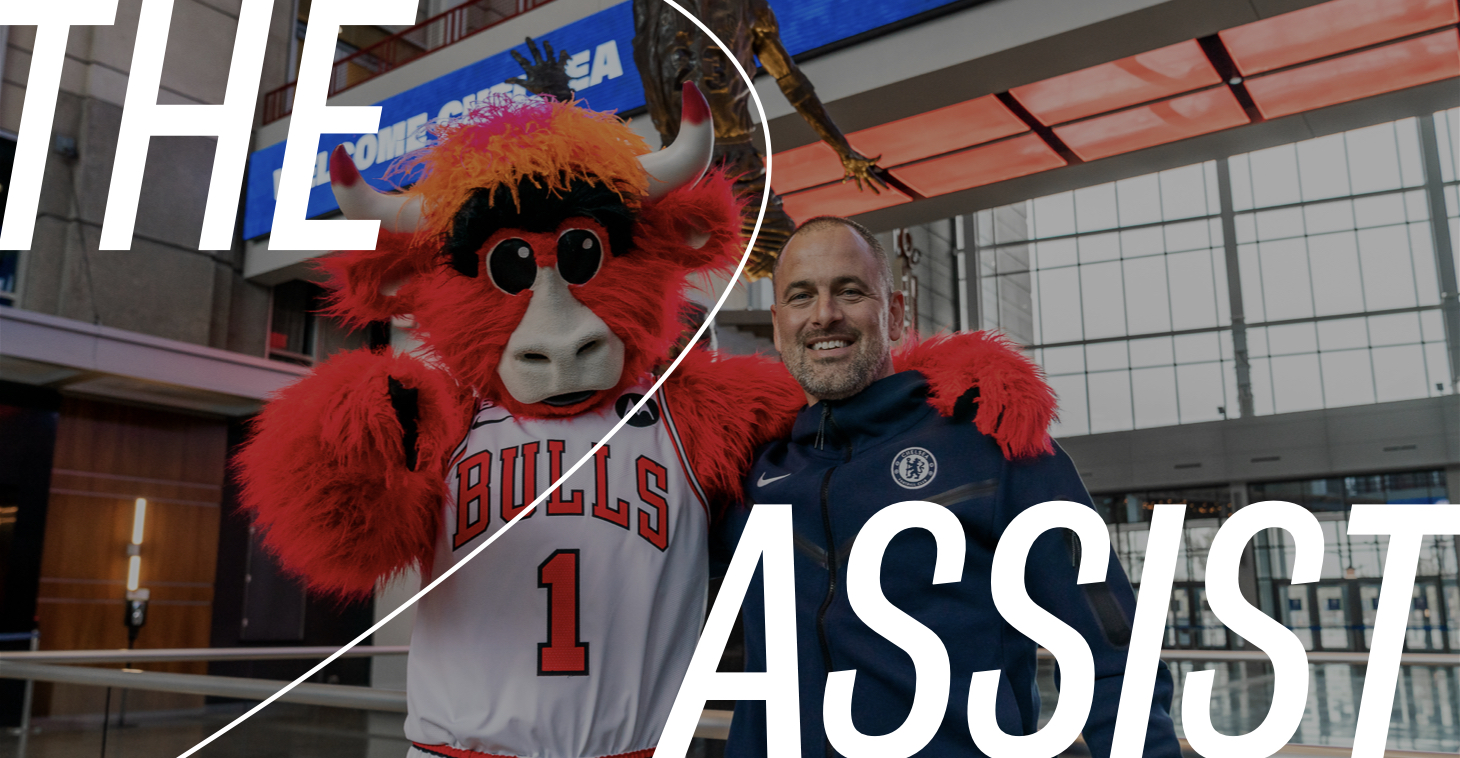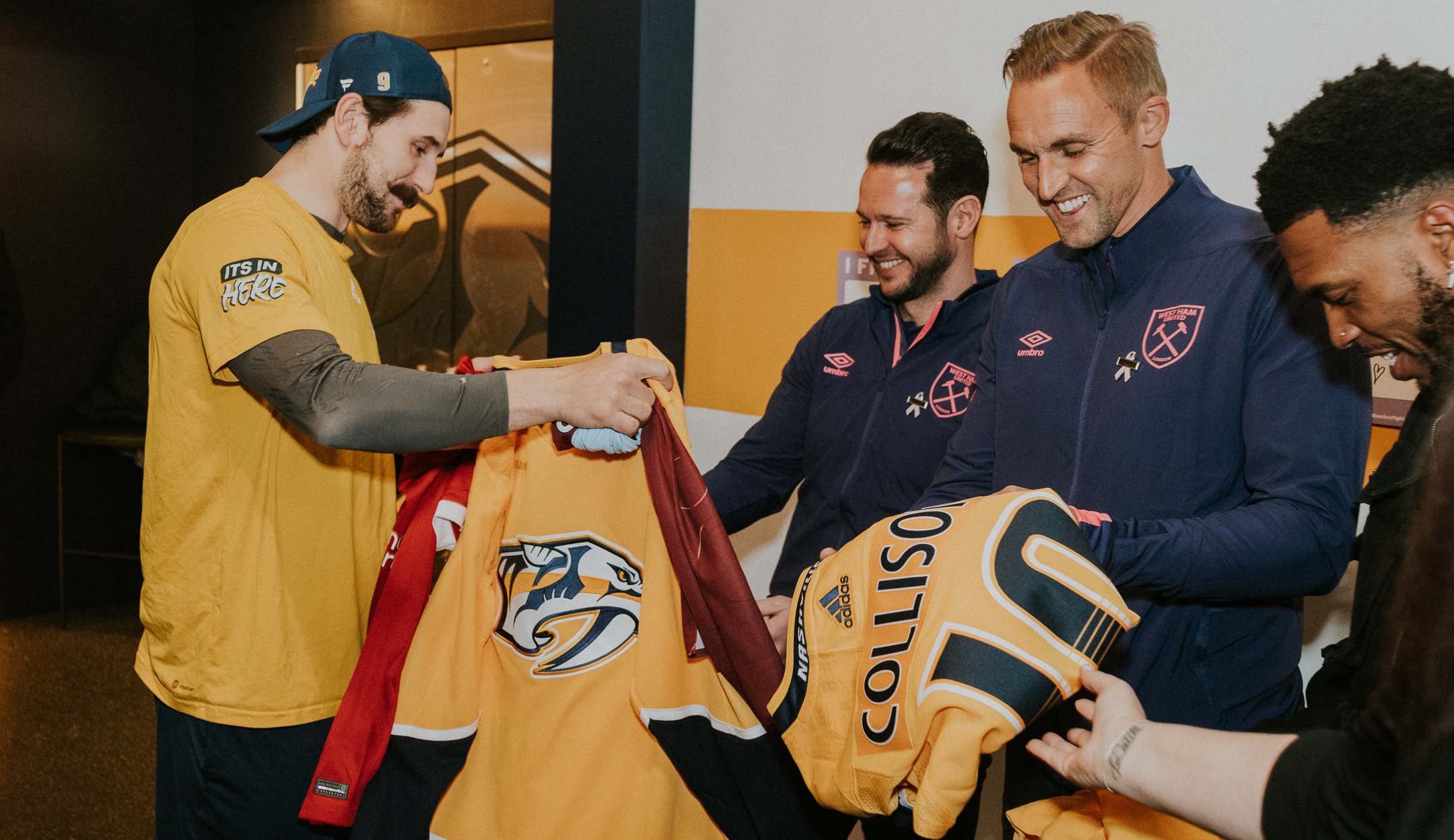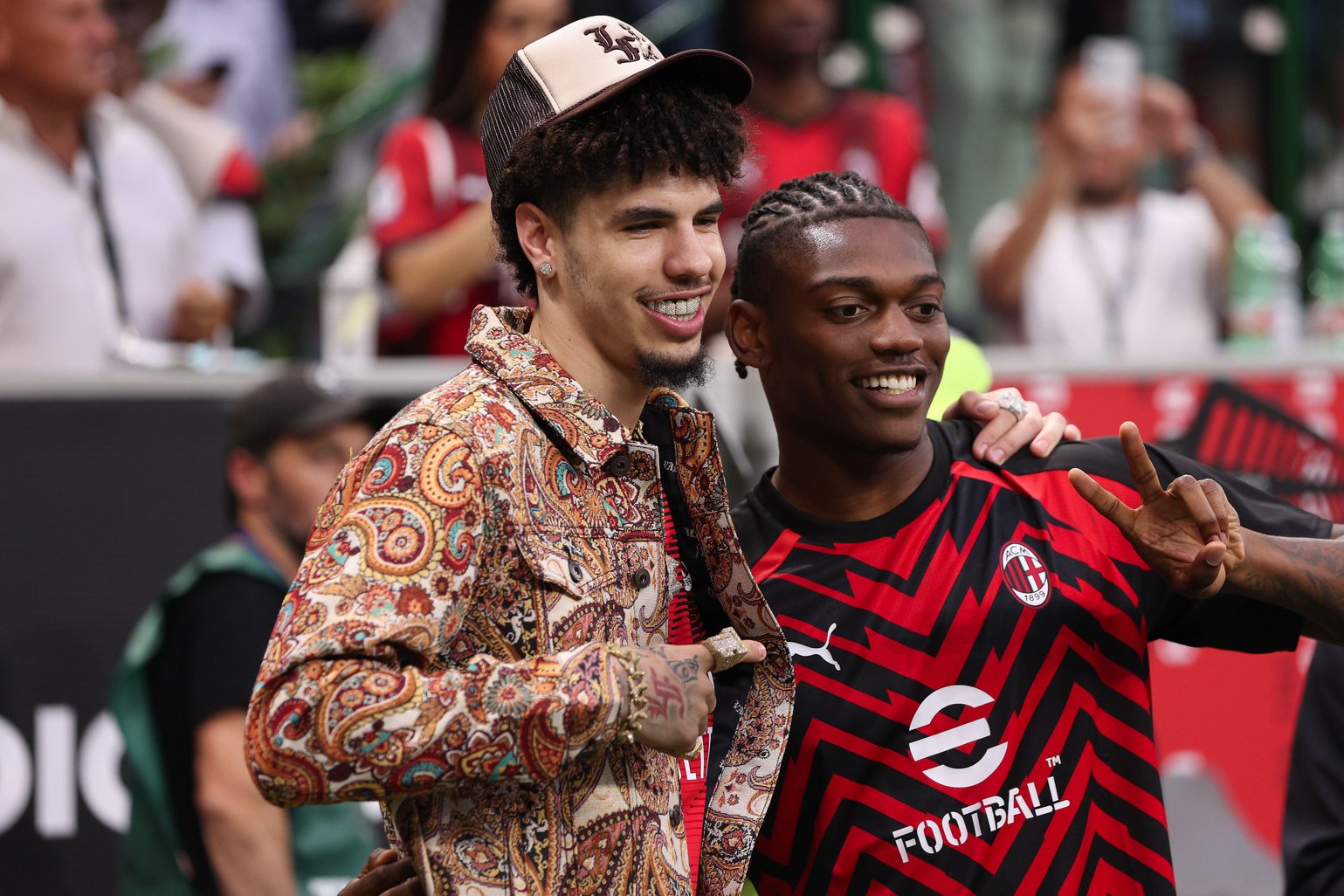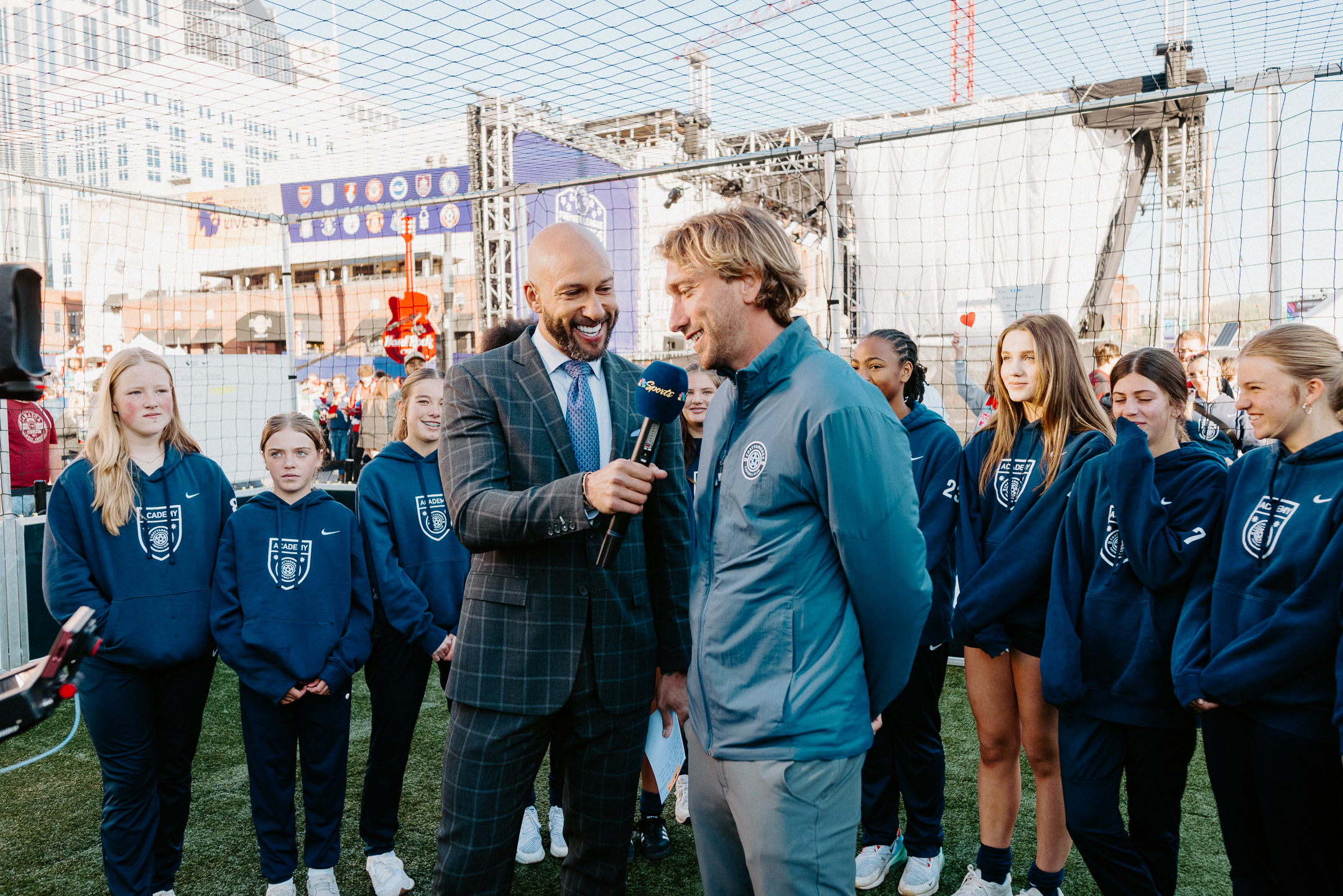
EXPLORING CROSSOVER IN SPORTS FANDOM
This week marked a rare occasion in North American pop culture and entertainment: the 32nd sports equinox in history, marking a single day when all four major U.S. leagues (NFL, NBA, NHL, MLB) have games scheduled simultaneously. With additional MLS playoff games to boot, this aligning of the planets, so to speak, is a special one for fans who enjoy sampling across sports.
This final edition in our mini report series takes the spirit of the sports equinox and explores crossover dynamics between soccer and other major American sports, examining how fans of different sports engage with one another’s leagues and events like the World Cup.
The findings reveal distinct patterns: a younger, more diverse, globally minded soccer fan base that engages with multiple sports more readily than any other audience—yet receives less reciprocal interest in return. Basketball fans emerge as a gateway audience for soccer growth, while football fans prove more resistant. And we introduce the “soccer equinox” concept, where singular days feature both European and domestic leagues play simultaneously—illustrating how fundamentally different soccer’s consumption model is from traditional American sports.
Data for this report comes from two sources. First, YouGov Profiles (October 19, 2025) results examining fans based on active sports engagement through reading, watching, or attending. This captures highly engaged fans rather than casual viewers and those who actively follow a sport rather than tuning in occasionally. Additional soccer equinox analysis draws from our 2024 Soccer on U.S. TV recap.

DEMOGRAPHICS: YOUNGER, DIVERSE, GLOBALLY MINDED
The fanbases of major U.S. sports reveal distinct demographic patterns, with soccer standing out in several notable ways. While each sport attracts its own audience profile, the differences suggest how various sports resonate across age groups, cultural backgrounds, and lifestyle stages.
Soccer fans skew notably younger than followers of other major sports. Among soccer fans, 51% are age 34 or younger—nearly twice the rate of followers of traditional “Big Four” sports like basketball, football, baseball, and hockey. This younger tilt positions soccer as the sport most aligned with digital-native, emerging audiences.
The diversity of these fanbases also varies considerably. Soccer fans are the most racially diverse group, with 50% identifying as non-White, closely followed by basketball fans. This stands in sharp contrast to football, baseball, and especially hockey, reflecting soccer’s global origins and its deep connections to immigrant communities across the United States. The sport’s international nature appears to resonate particularly strongly with multicultural audiences.
Education and income patterns show soccer fans clustering toward higher socioeconomic brackets. Among soccer fans, 44% hold bachelor’s degrees or higher (the highest rate across all sports examined), while 31% live in households earning $100,000 or more annually, tying with hockey for the top position. Soccer fans are also more likely to have young children at home, with 36% living in households with at least one child under 18, compared to 25-29% for other sports. This aligns naturally with soccer’s younger age profile and suggests the sport attracts affluent, educated families navigating life stages that include raising children.
Gender representation varies across sports, with soccer showing lower female engagement among those who actively watch, read about, or attend games. Just a third of women consider soccer among their core interests, lower than that of female football, basketball, hockey, and baseball fans. This gap may reflect multiple factors: soccer’s still-developing domestic league footprint in the U.S., potential differences in how women engage with the sport (perhaps more casually or around major tournaments rather than week-to-week), and the distinction between following women’s versus men’s soccer.
DEMOGRAPHIC COMPARISON ACROSS SPORTS FANBASES

MULTI-SPORT ENGAGEMENT: WHO WATCHES WHAT
Soccer fans stand out as notably multi-sport in their interests, showing strong engagement across other major U.S. leagues. More than half of soccer fans also follow football (56%) and basketball (52%), while 37% engage with baseball and 21% with hockey. This pattern suggests soccer fans tend to be sports enthusiasts broadly, rather than singularly focused on one league or sport.
The reciprocal interest, however, tells a different story. Among fans of other major sports, soccer draws more modest followings: less than a third of basketball fans engage with soccer, more than a quarter of hockey fans, and less than a quarter of football and baseball fans. While these figures indicate soccer has established footholds across various sports audiences, they also reveal soccer receives the least reciprocal interest from other sports fanbases. Soccer fans’ appetite for other sports far exceeds the reverse, pointing to both the expanding reach of soccer in the U.S. and the room it still has to capture broader mainstream attention.
Football’s dominance across fanbases remains unmistakable. Basketball fans, hockey fans, and baseball fans all show strong interest in football, reinforcing its position as the common thread in American sports culture. Hockey, by contrast, occupies a more niche position, drawing the lowest crossover interest across all fan segments.
These patterns reveal the interconnected nature of sports fandom: few fans exist in single-sport silos. Soccer fans simply lean harder into that multi-sport identity than most, consuming a diverse mix of leagues and competitions while other sports fans show more selective crossover patterns. In a sense, soccer fans are culturally bilingual: they exist comfortably in both the soccer world and the traditional American sports landscape, moving fluidly between the two rather than treating them as separate domains.
Crossover Interest: How Fans of Each Sport Engage With Others

WORLD CUP INTEREST AMONG OTHER SPORT FANS
While soccer fans predictably show overwhelming enthusiasm for the World Cup, the tournament’s appeal extends meaningfully beyond the sport’s core audience, though with notable variations across fanbases. Basketball fans emerge as particularly receptive to the world’s biggest soccer event, positioning them as a potential gateway audience for soccer growth. This pattern aligns with basketball’s position as the most internationally oriented of America’s major sports.
Among basketball fans, 20% express top interest in the World Cup, significantly higher than football, baseball, and hockey fans. An additional 18% of basketball fans report being “somewhat interested.” This receptivity likely reflects basketball’s global DNA. The NBA has become increasingly international with players from around the world dominating the league. An American hasn’t won NBA MVP since 2018, underscoring how thoroughly basketball has embraced its worldwide talent pool. Fans accustomed to celebrating international stars in their primary sport appear more naturally drawn to soccer’s global showcase.
The desire to experience the World Cup in person reinforces this pattern. Forty percent of basketball fans agree they’d like to attend the tournament live—a significant gap above fans of hockey, baseball, and football. Again, basketball and soccer share a global sensibility. Both sports transcend national boundaries in ways that resonate with their audiences. For fans already engaged with international competition and diverse playing styles, the World Cup represents a natural extension of that worldview.
However, the data also reveals the challenge ahead. Majorities of football fans, baseball fans, and hockey fans report no interest at all in the World Cup, while 43% of basketball fans say the same. Football fans, in particular, prove to be the hardest sell. Not only do more than half express zero interest in the tournament, but 6-in-10 actively disagree with the idea of attending in person, the highest rejection rate among all sports. These figures indicate that while soccer has established meaningful footholds across U.S. sports audiences, the World Cup still faces significant headwinds in capturing mainstream attention.
The 2026 World Cup, held in the United States, Canada, and Mexico next summer, presents a unique opportunity to convert some of this ambivalence. Home soil tournaments historically boost engagement, offering Americans an accessible entry point to experience the world’s most-watched sporting event without traveling internationally. For a sport still growing its domestic footprint, hosting the World Cup should prove transformative in reaching that persuadable middle, made up of fans who express mild curiosity but haven’t yet fully engaged.
World Cup Interest Across Sports Fanbases

SOCCER EQUINOXES: ABUNDANCE OF GAMES
The rarity of the sports equinox offers fans an abundance of action and an abundance of choice all in the same day. For those of us in the soccer industry, this phenomenon sparked a question: what would a soccer equinox look like? The answer reveals just how different soccer’s calendar is from traditional American sports.
We defined a “soccer equinox” as any day featuring television broadcasts of both European leagues (Premier League, La Liga, Serie A, Bundesliga, Ligue 1, and others) and domestic North American leagues (MLS, Liga MX, NWSL, USL, and more) simultaneously. The results were striking: in 2024, 131 days (36% of the entire year) qualified as soccer equinox days. On these days, fans could watch European games in the morning and domestic games in the evening, creating a daylong soccer experience that spanned continents and time zones.
This pattern stands in sharp contrast to the seasonal rhythms of other major sports. Football fans know their sport occupies roughly four months of the year, with clear boundaries between season and off-season. Baseball stretches longer, but still observes a winter break. Soccer, by comparison, operates nearly year-round. In 2024, only 14 days featured no professional soccer games broadcast on linear or cable television at all—a testament to the sport’s global, always-on nature.
For fans accustomed to sports with defined seasons and predictable schedules, soccer’s constant availability represents a fundamentally different consumption model. The 131 equinox days in 2024, alongside the nearly 3,000 games broadcast on television, presented an abundance of choice—and this is an annual occurrence. Fans don’t wait for their sport to “come back”—it’s always there, unfolding across multiple leagues, competitions, and continents simultaneously. This creates opportunities for deeper engagement, but also requires different viewing habits. Soccer fans learn to curate their experience, choosing which leagues and games to prioritize rather than consuming everything their sport offers.
The soccer equinox concept underscores a broader truth about the sport’s place in the global sporting landscape: it doesn’t pause. While this week’s sports equinox feels momentous precisely because of its rarity, soccer equinoxes happen more than one out of every three days. For a sport still building its foothold in the United States, this year-round availability offers a distinct advantage.
365 Days in 2024: When Soccer Equinoxes Occurred
Each square represents one day. Gold squares show days when both European and domestic leagues played (131 days = 36%)

CONCLUSION: SPORTS FANDOM IS CONNECTED
The latest sports equinox offers a reminder of sports fandom's interconnected nature. These moments feel special precisely because they're uncommon, giving fans a chance to sample across leagues and sports in a single day. This mini report set out to explore that crossover dynamic, examining not just how soccer fans engage with other sports, but how fans of football, basketball, baseball, and hockey view soccer and the World Cup in return.
The findings reveal a sports landscape more fluid than siloed, though with meaningful variations in how different fanbases engage across sports. Soccer occupies a distinctive position in this ecosystem—drawing a younger, more diverse, and globally oriented audience while its fans demonstrate the strongest multi-sport appetite of any fan base examined. Yet the reciprocal interest remains uneven. Soccer receives less crossover attention from other sports fans than it gives, highlighting both progress and opportunity as the sport continues building its American footprint.
Looking ahead, these patterns suggest soccer's growth trajectory won't follow a single path. Basketball fans emerge as a particularly receptive audience for World Cup engagement, while traditional sports like football show more resistance. The 2026 World Cup presents a moment to test whether home-soil hosting can shift these dynamics meaningfully. Meanwhile, soccer's year-round global calendar, exemplified by those 131 "soccer equinox" days in 2024, positions the sport as always available, though that abundance creates its own challenges in capturing sustained mainstream attention.
Key Insights:
Soccer fans are younger and more diverse than traditional sports audiences: With 51% under age 34—nearly twice the rate of "Big Four" sports fans—soccer attracts a notably younger demographic. The fan base is also the most racially diverse (50% non-White) while skewing more educated and affluent, with 44% holding bachelor's degrees and 36% raising young children. This profile positions soccer to grow with emerging generations.
Soccer fans are "culturally bilingual," engaging heavily with other sports: More than half of soccer fans also follow football (56%) and basketball (52%), making them the most multi-sport audience of any fan base examined. They exist comfortably in both the soccer world and traditional American sports landscape, moving fluidly between the two rather than treating them as separate domains.
Basketball fans represent a gateway audience for soccer growth: Basketball fans show the highest World Cup interest (20% "top interest") and strongest desire to attend in person (40%), significantly above other sports. This likely reflects basketball's international character. Fans accustomed to global talent and competition appear naturally drawn to soccer's worldwide showcase.
Soccer receives the least reciprocal interest from other fanbases: While soccer fans enthusiastically engage with other sports, only 21-31% of football, baseball, and hockey fans reciprocate interest in soccer. Football fans prove particularly resistant, with more than half expressing no World Cup interest, nor desire to attend in person—the highest rejection rate across all sports. Soccer's room for growth among mainstream American sports audiences remains substantial.
The "soccer equinox" reveals a fundamentally different consumption model: In 2024, 131 days (36% of the year) featured both European and domestic leagues playing simultaneously, creating all-day soccer viewing opportunities. This stands in stark contrast to traditional American sports with defined seasons and off-seasons. Soccer's year-round, always-on availability presents both advantage—fans can always find a game—and challenge—navigating near-constant content requires different viewing habits than seasonal sports demand.
Sports fandom is interconnected, with crossover interest varying by sport: Few fans exist in single-sport silos. Football dominates crossover interest across all fanbases, while hockey occupies a more niche position. The sports equinox concept underscores how modern sports consumption increasingly involves navigating multiple leagues, competitions, and viewing windows rather than following a single sport exclusively.